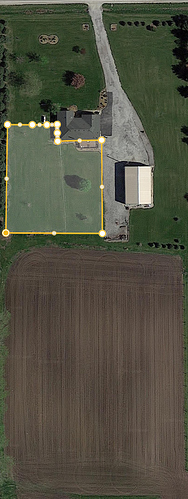Well, assuming the home inspection doesn’t expose anything glaring, I am the proud new owner of 5 acres. The back 2.5 is in soybeans right now, so the horses aren’t coming home for at least 10-12 months.
While I am familiar with many things “farm” having helped out my former BO for years and years, there’s a difference between owning it and working on it. You guys are also geniuses at layouts, I’ve seen you do it before.
The area highlighted will be fenced for the dogs.
The pole barn is 40x60, and is an empty shell. Some of that needs to be retained for parking/storage/equipment. It is also possible this doesn’t get used for horse stuff at all. Large sliding doors on the north and the west side.
Here’s the wants:
-horses out 24/7
-sacrifice area that houses the round bale feeder and water trough, as well as a run in if needed
-connected to pastures so that they can be rotated as much as possible
-small outdoor arena, maybe 80x120 or so?
-AFFORDABLE, as much as possible.
Questions:
Has anyone converted a farm field to pasture? Tips? (at least it’s in beans and not corn)



 Welcome to Horses at Home!
Welcome to Horses at Home!


